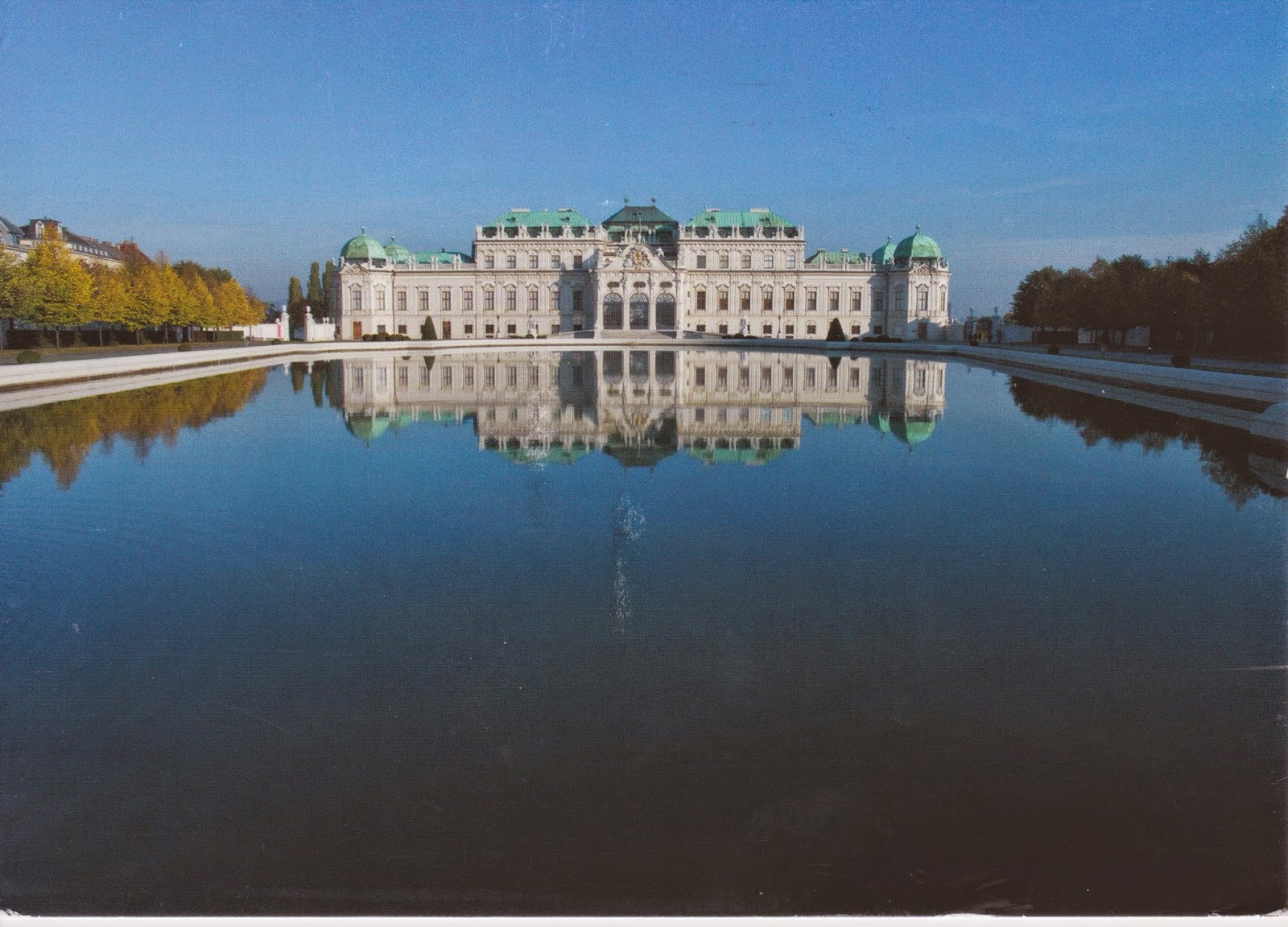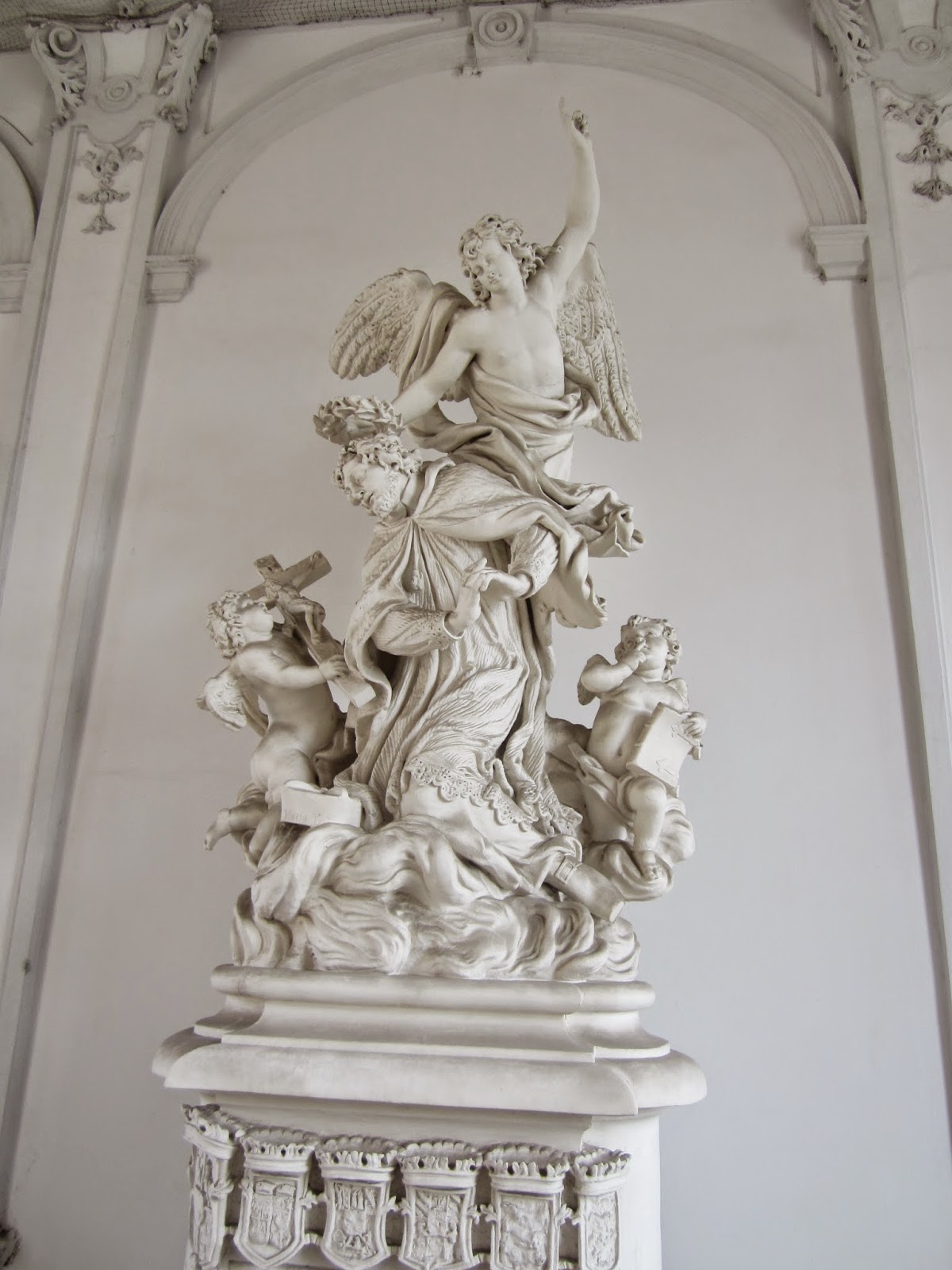Belvedere Palace, Vienna, Austria
The historic building complex has two palaces, Upper and Lower Belvedere (Upper Belvedere is featured on the card) linked by a park-like garden with fountains, flowers and sculptures. Today the inside of Upper Belvedere is home to the Austrian gallery and a collection that covers Austrian art from the Middle Ages to Baroque, 19th century Biedermeier (Waldmüller), the Ringstraße time and turn of the century art such as Klimt, Schiele, and Kokoschka. The Orangery exhibits of contemporary art can be found in Lower Belvedere.
Prince Eugene of Savoy had the palaces built on land he purchased in 1697 as a summer residence and commissioned architect Johann Lukas von Hildebrandt to design the project. Hildebrandt was subsequently employed as the court architect and designed several other notable buildings such as the Schloss Hof Palace, the Schwarzenberg Palace, the Kinsky Palace, and the entire Göttweig Monastery estate in the Wachau Valley.
The area surrounding Belvedere was completely undeveloped at the time the project started making it ideal for constructing landscaped gardens and the summer palace. Construction began between 1712 and 1717 and was completed by 1723. After Prince Eugene died without a legally binding will a commission set up by the Holy Roman Emperor Charles VI named the prince’s niece, Princess Victoria, as his heir. The princess moved into Belvedere in 1736 but immediately decided to auction it off as soon as possible. It was 8 years later before Maria Theresa, the daughter of Charles VI, was able to purchase the estate. The palace was eclipsed by other imperial palaces and not used until 1770 when a masked ball was staged here for the marriage of Maria Antonia to the French Dauphin who later became Louis XVI. To provide some example of the size of the palace the guest list had 16,000 members.
Both palaces suffered considerable damage during World War II with parts of the Marble Hall in Upper Belvedere and the Hall of Grotesques in Lower Belvedere destroyed by bombs. Reconstruction work was commenced following the end of the war and both palace galleries were open in 1953.
Last summer when we were in Austria we visited Belvedere and here follow some photos from that trip showing the gardens and the outside of the palaces.
The gardens reminded me of Versailles in France with the long walkway and statues, pools, and fountains. The tall spire of St. Stephen's Cathedral can be seen at the left. Lower Belvedere is the white palace with red roof at the right. The city tour bus recommended by our hotel dropped us off at Belvedere and we were urged to take the metro back to the hotel but elected to walk instead so we could visit the Cathedral and any other places of interest on the return trip. Bob estimated the walk was about 4 or 5 US miles as it took us most of the afternoon.
Look back up the hill toward Upper Belvedere.
And back down the hill toward Lower Belvedere.
The stamp on the postcard has a reproduction of a painting by Bernardo Strozzi (ca 1581-1644) a prominent, prolific Italian Baroque painter. Strozzi was born in Genoa but was also associated with Venice. When he was about 17 years old he entered a monastery but left there after his father died, in about 1608, to take care of his mother. He earned a living by his painting. Many of the subjects of his paintings reflect his Franciscan education. After his mother died in 1630 he was pressured by the court to re-enter the monastery and was briefly imprisoned in Genoa. Upon his release from prison he fled to Venice to avoid confinement in a monastery. He was nicknamed “the Genoa priest.”
For additional information, see:
http://en.wikipedia.org/wiki/Belvedere,_Vienna
http://en.wikipedia.org/wiki/Bernardo_Strozzi



















No comments:
Post a Comment